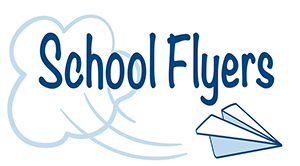Art programs blend colors, curriculum
Shelled inside a classroom draped with colorful works of art Barbara Luka’s third grade class at Oakwood Elementary begins to tame their excitement and quietly work on their paper poetry books.
Using colored pencils the students begin to elaborate on their watercolor designs that they created in a previous art session. Some grab scraps of lined paper and begin jotting down lines of poetry that fit in with whatever theme they’ve developed on the outside of their books.
Soon the inflow and outflow of imaginative ideas in the room is palpable; exactly what art specialist Erica Wangsgard wants.
“Does everybody feel like their creative juices are flowing?” Wangsgard asks the students after facilitating a group conversation to get the students thinking about their designs.
This scene of 7 and 8-year-old students transforming a simple (albeit artfully decorated) classroom into an art studio is a familiar sight for Wangsgard. As a specialist in the Beverly Taylor Sorenson Arts Learning Program, she travels between Oakwood Elementary and Granger Elementary teaching all grade levels about visual art.
“I always refer to my students as professional artists,” Wangsgard remarks with affection.
Her constituency of artists is large: two schools, multiple grade levels, and hundreds of students eager to immerse themselves in art. The task is daunting, but the rewards are tangible.
Wangsgard is one of 57 specialists throughout the state who operate under the Beverly Taylor Sorenson Arts Learning Program banner. Each specialist works side-by-side with classroom teachers to integrate one of four art categories (i.e., dance, visual art, music, and drama) into the Common Core Standards, typically on a week-by-week basis.
The Program is under the direction of the Utah State Office of Education through legislative funding. Currently, there are ten Granite District elementary schools that house art specialists from the BTSALP.
The Program is one of several specialized art curriculum initiatives that stretch throughout the District and across the state. Another popular program among students is the parent-sponsored Meet the Masters curriculum framework.
In Meet the Masters, students take time to learn about prominent artists from ancient and modern history (e.g., Rembrandt, Monet, da Vinci, etc.) in conjunction with Core Curriculum Standards. Students then create their own pieces of art in the style of the artist they are learning about.
These programs are more than just “Art for Art’s Sake.” Rather, they allow art to spread out and permeate into other school subjects.
“It’s not a separate deal,” Wangsgard said.
For example, Luka’s class at Oakwood incorporated aspects of language arts as they created their poetry books. The two subjects didn’t have to compete; they worked side-by-side.
In addition, mathematical and scientific concepts are commonly integrated into artistic lessons (and vice versa) to help learning to come to life.
As you walk down the hallways at Oakwood Elementary, and other schools throughout the District, you’ll inevitably see living galleries of artistic works that creatively display science, English, math, and social studies lessons.
“Vocabulary, science, math; it’s all wrapped into art,” Wangsgard said.
The cooperative and integrative approach to teaching art in the classroom is something that Wangsgard is thrilled to see. She hopes that teachers and administrators throughout the District continue to involve art in teaching as much as possible.











